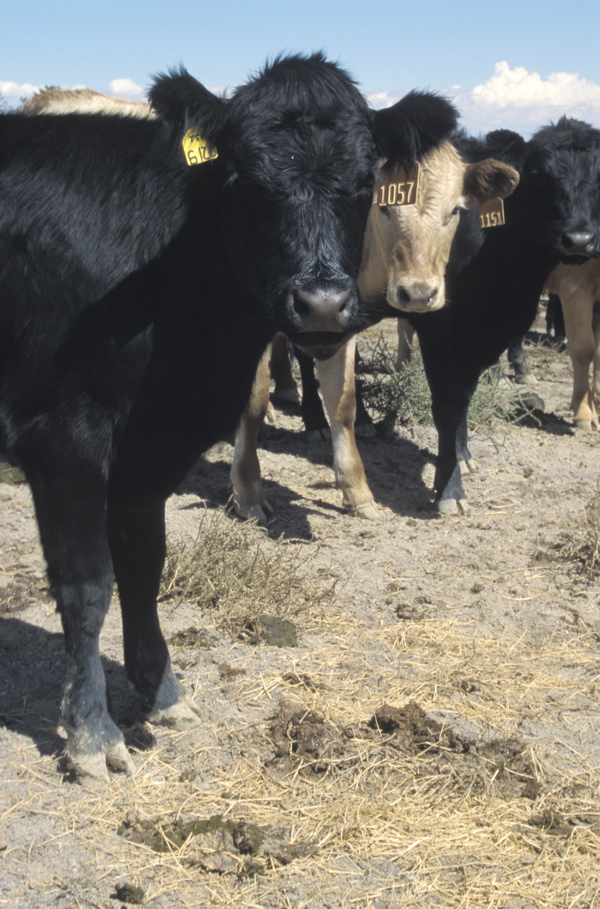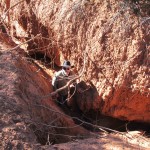
Recently (10/14/2015), I registered the domain name “ConservativeEnvironmentalism.com.”
(Actually, I’ve been describing the content of “theRightWayToBeGreen” as “conservative environmentalism” since its inception, and any web search for that category would have turned up this site as one of the top hits.)
In celebration of this event (registering “Conservative Environmentalism.com) I’m posting the introduction to one of my books — Gardeners of Eden, Rediscovering Our Importance To Nature because it describes the principles of this alternative to left-wing environmentalism so well.
If you’re wondering what that means, read on (and read some of the other posts as well.)
On Duel-ism; Living Like Bees, Beavers, and Wolves; Applying Alien Solutions to Earthly Problems; and Becoming Native Again
The argument over how we should live in relation to the rural and remote lands of the American West hasn’t changed much in more than a century. John Muir, founder of the Sierra Club and father of the modern environmental movement, said in the late nineteenth century that we should reduce our impact on those lands as much as possible and preserve and protect all that we can. Most certainly, Muir and his followers insist, we should protect as much as possible of that which has remained relatively untainted by human alteration—the wilderness, the wildlands.
Others have maintained, on the other hand, that it is our right to use whatever we choose because God created it for us or merely because there is no good reason not to. Still others, the middle-of-the-roaders, say, ”It would be nice if we could protect everything, but we’ve got to be realists….” They concede the high road to the preservationists but turn the dispute into a struggle of idealism versus realism, the moral versus the practical, small is beautiful versus more is better.
This fits right into our duelistic society of liberals versus conservatives, Republicans versus Democrats, and tree-huggers versus wise-users, and plays to our prejudice that the solution to all environmental problems is ”victory for our side.” Within this us-versus-them scenario, a few try to achieve compromise or find a middle ground, but no one, or almost no one, asks if these are really the only two alternatives.
They aren’t. There is another alternative, one that is much less divisive and much more hopeful. There is a way to enrich the land as we use it; a way we can benefit the plants, animals, and ecosystems with which we share this planet as we benefit ourselves.
If this sounds too good to be true, or too close to violating the maxim that ”You can’t have your cake and eat it too,” the message detailed within this book is more radical than that. The message you’ll read here is, ”You can’t have your cake unless you eat it too.”
This is not news. Bees, beavers, wolves, and more plants and animals than there is time or room to list have been operating under this maxim for millennia. Bees pollinate flowers as they consume nectar and, in the process, create more plants and more flowers and, therefore, more food for more bees. Beavers eat willows and use them to construct dams which create ponds and enlarge meadows. That creates more habitat for more willows and more beavers. Wolves cull the sick and slow among the deer, keeping the herds genetically healthy so they prosper and continue to feed more wolves.
Until recently (for the first 99 percent of our existence), humans fit into nature in this same mutually beneficial way. As hunters and gatherers, as pastoralists, and even as small-scale farmers and gardeners we benefited the ecosystems of which we were a part in much the way beavers, bees and wolves do. Some of us still live in this naturally interdependent way.
A much larger and faster-growing percentage of us, however, get our food, fiber, and other products from nature via a system of extractive technologies more characteristic of aliens than of a mutually interdependent community of natives. We have developed this extractive technology for good reason, of course—it produces food, fiber, and other things we need in prodigious amounts, insulating us from the effects of drought and the other vagaries of less technological agriculture. But living as an alien has its downside, too. It threatens the breakdown of important ecological functions via global warming and the endangering of species. It erodes the connection between humans and nature as we turn our communities into a series of urban and suburban space stations surrounded by an ”exploitosphere” from which we extract everything from food to recreation.
Some of us have become aware of the downside our alienation creates and have begun to try various means to counter it. Ironically, those countermeasures have been, for the most part, just as alien as the situation they were created to correct. Rather than restoring our old relationships with the ecos of which we were once an important part, these countermeasures have removed us even farther from it. To try to counter the effects of our alien technology, we have created ever larger preserves and protected areas, and removed ourselves and our impacts from them. Acting as if we’re trying to fool nature into thinking that we’re not here, we have behaved as aliens would. We treat this land outside our exploitosphere as if it were a combination art exhibit, zoo, cathedral, and adventure park. There we limit ourselves to roles as sightseers, worshipers, caretakers, and joyriders. Exacerbating the situation, we make our technological system ever more extractive, efficient, and detached in the mistaken belief that the way to heal the damage we do is to create less connection rather than more.
The problem with all this is that we humans were once a part, in some cases a very important part, of the very ecosystems we’re trying to restore by removing ourselves from them. This dooms us to trying to put back together an extremely complex puzzle with a very important piece missing—us. And, when we discover that this alien-style solution doesn’t work, we don’t relent, we just do it harder. We remove ourselves from ever larger pieces of nature (or at least we pretend to), and we create more and more stringent limits on our involvement in those areas from which we can’t remove ourselves.
And as we do all of this, we neglect the obvious truth that, if removing wolves or some other predator does harm to an ecosystem, if causing a species such as the red-legged frog or the tiger salamander to become extinct threatens the security of all other species, as some of us claim, then it stands to reason that removing humans who have played a more widespread, more impactive role must cause even greater problems.
In spite of this, hardly anyone, to my knowledge, is expressing concern about the removal of humans from the roles within the ecosystem that we have evolved to play, and that Nature has evolved to have us play. Nor is anyone conducting studies to determine what those roles were or what changes have occurred because we no longer fulfill them. Most important, perhaps, no one is trying to reintroduce humans into the environment to have us resume our duties as hunters, herders, gatherers, and whatever else, even though we’re going to great ends to restore animals that have played much less significant roles.
Sometimes I wonder what Earth’s ecosystems think has happened to the two-leggeds who once served them so well. Where did those beings go who once played such an important role as predators, foragers and cultivators? Have they vanished? Been abducted? Gone extinct? And then I wonder what those same ecosystems think of this new being which walks in their midst, which resembles the one that has disappeared in every way except that the new one keeps none of the old responsibilities, the old agreements. Is it an impostor? An alien body snatcher who has removed the old ones and taken their place? In a way, it is. Or rather, we are.
In fact, most of us know about as much about restoring a Martian ecosystem as we do an earthly one.
This book offers an alternative to living on Earth as aliens. It offers a way to become native once again, to reassume some of the responsibilities we evolved to uphold, at least as much as is possible in the context of a modern technological world. The stories that follow are about reintroducing humans into the environment in the same way that we might reintroduce an endangered subspecies of caribou or flycatcher or cactus. They make the point that this is as important in the case of humans as it is in the case of those other living things, and for the same reason—because, as we remove ourselves from those old mutualisms by acting as aliens, we leave as big a hole, if not a bigger one, than those other life forms have left.
That may set off your alarms in a couple of ways. ”Ecosystems got along just fine before there were humans!” you may say. Or you might ask, ”How could it be possible that humans are abandoning the planet when there are so many of us, and it’s so obvious that we’re overwhelming it?”
As for the first of those questions, it’s true that the earthly community got along fine before there were humans, just as it got along fine before there were bees and beavers and plenty of other things. But those pre-human communities were made up of different species than the one we evolved to be a part of. Those old communities and many of the species that comprised them are gone. The community of which humans evolved to be an important part is still here.
As for how I could say that humans are abandoning the planet while it seems so obvious that we are overrunning it, that brings us back to the alien/native distinction. It’s the people who are living as aliens who are overrunning the planet. Those who are living as natives are few and getting fewer. Some remain as holdouts from traditional ways of being. Others are the products of their own do-it-yourself reintroduction program. Examples of both are the subject of this book.
Last, but not least, others have expressed concern that the claim that humans have been an essential part of nature, and can once again become so, is just a restatement of the old arrogance that our species has been granted dominion over nature. This arrogance, critics say, has been used to excuse all sorts of environmental profligacies. Humans have certainly done things to harm the environment, and the claim that we have dominion over nature has certainly been used as a means to excuse such harms, but the examples that follow in this book are not examples of domination, they are examples of mutualism and synergy. And while it may be accurate to level the charge of arrogance when humans are blinded by our claims of domination and do harm, that charge makes no sense when it is directed at humans playing roles we have evolved to play and that nature relies on us to play. We don’t call beavers arrogant when they create ponds that water meadows that grow cottonwoods that feed more beavers. Nor do we call bees greedy or exploitative when they consume nectar while they pollinate flowers to make more flowers to support more bees.
The purpose of this book is to dispel smoke rather than to create it. One way in which it achieves this purpose is by revealing an environmental smokescreen of which most of us are unaware, and behind which a whole class of environmental wrongs goes undetected. It also clears our environmental view by showing us how to restore feedback loops between humans and nature that have shriveled and ceased to function as a result of our adoption of an alien agriculture and a just as alien environmentalism.
Why should you listen to what I have to say about these things? I’m not a scientist, but I have been an environmental activist for thirty-one years. I started my activist journey fighting coal strip mines in southeastern Ohio. From there I moved west to Arizona where I worked to designate remote public lands as wilderness, fought to tighten the restrictions that governed what ranchers could do to protect their livestock from mountain lions and black bears, and helped initiate a campaign to ban uranium mining in the vicinity of the Grand Canyon. My involvement in that latter campaign included helping to put together some of the first demonstrations organized by Earth First!, one of the most radical of environmental groups. During this part of my environmental career I was designated one of the 100 top grass roots activists in the United States by the Sierra Club (in 1992).
More recently, I have been involved in putting together a collaborative, conflict resolution group involving ranchers and environmentalists that has been used as a model for other groups. I wrote a Pulitzer Prize-nominated book (Beyond the Rangeland Conflict, Toward a West That Works) about this experience and have been called on to give well over a hundred presentations about it around the West. Lately, I created an environmental organization named EcoResults! that secures grants to fund efforts by rural people to restore damaged lands and bring them back to environmental function. As part of my involvement in EcoResults! I’ve done my share of spreading seed and mulch, piling rocks in gullies, reading monitoring transects, and acting like a predator by herding animals.
My methods, in other words, have changed, but my values haven’t. I still value open country, wild land, wildlife, predators, and healthy ecosystems as much as I ever did, maybe more. Now, however, instead of trying to serve those values by demonstration, regulation, and litigation, I work with people who live on the land and ask it what it needs and respond when it answers.





